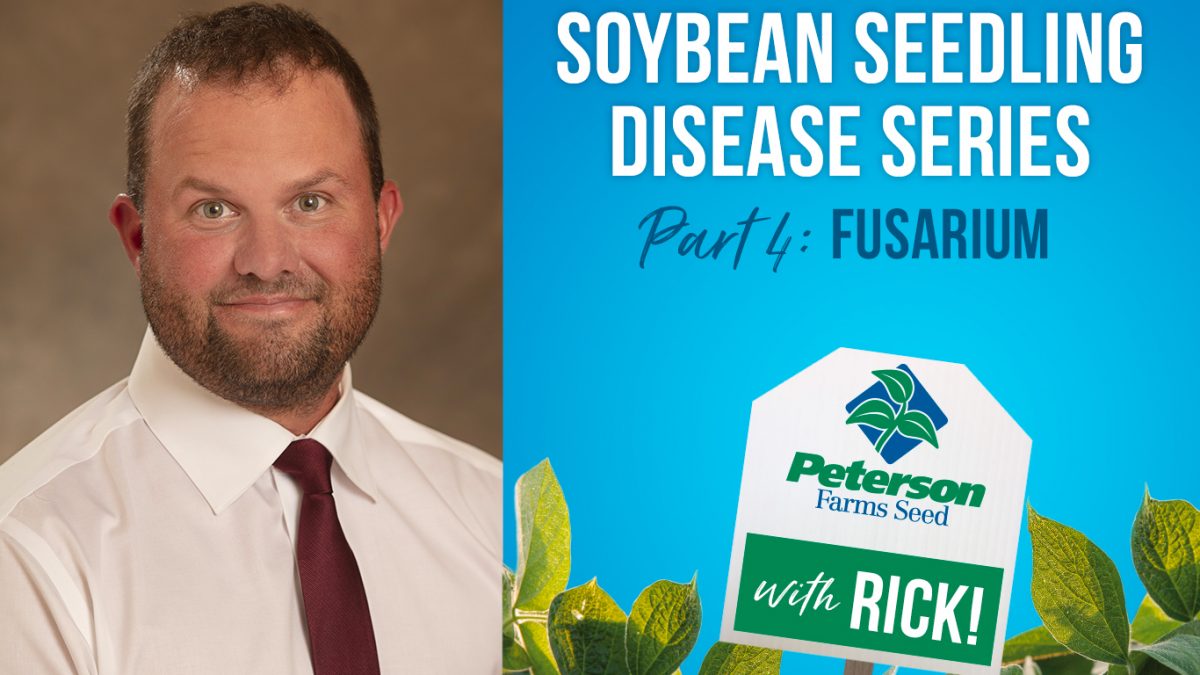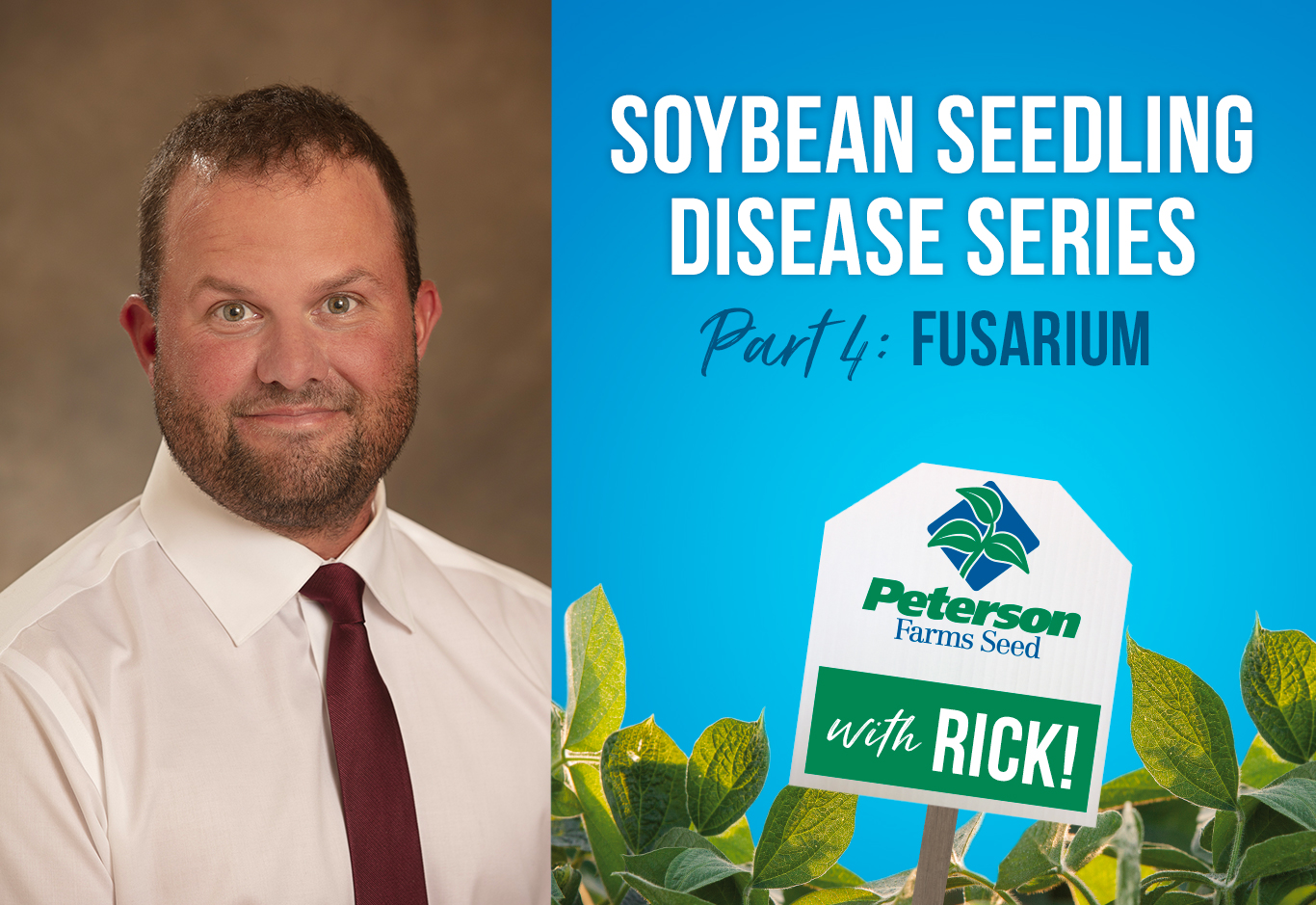Soybean Seedling Disease Series Part 4: Fusarium- The Dry Rot

Today is #4 in our four-part series on soybean seedling diseases. So far, we have covered Phytophthora, Rhizoctonia and Pythium. Today we will focus on Fusarium. What contributes to it and what you can do to manage it. Hint: it’s investing in a high-quality seed treatment.

Fusarium Facts
- Very common soil disease with 12 different species infecting soybeans, the most common in our area is Fusarium oxysporum.
- Conditions for development vary depending on species. Hot and dry weather conditions are most common.
- Lesions restrict the plant from picking up nutrients and moisture, especially in dry conditions.
- Older plants are less susceptible however infections happen all season long.
- The disease overwinters on debris and infected seeds.
- Unlike Pythium, which is associated with wet conditions, Fusarium is known as a “Dry Rot”.
What Does Fusarium Look Like?
- Affected seedlings are slow-growing, stunted and weak.
- Symptoms appear on lower leaves and stems.
- Infected plants that do not die have shriveled and small seeds.
- Stressed plants from Fusarium can be more susceptible to other field conditions such as herbicide damage, high pH and soybean cyst nematodes.
What Can You Do About Fusarium?
Varieties have varied levels of tolerance however, fungicide is the best control.
It’s no secret that we are big believers in protecting your input investments with a high quality, specially formulated seed treatment. If you haven’t heard our reasoning, check out this blog.
For a grower on the fence about the added expense, I’d suggest dropping the population to pay for treatment rather than the extra seed cost—not something you would expect a seed company to say!
If you have questions about what you’re seeing in your fields, seed placement or seed treatment, drop me a line at Rick@PetersonFarmsSeed.com.



